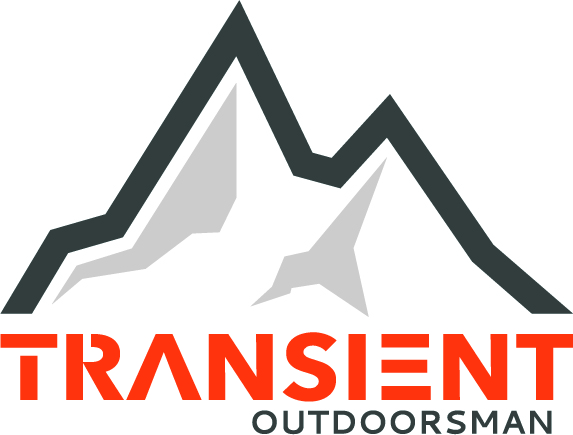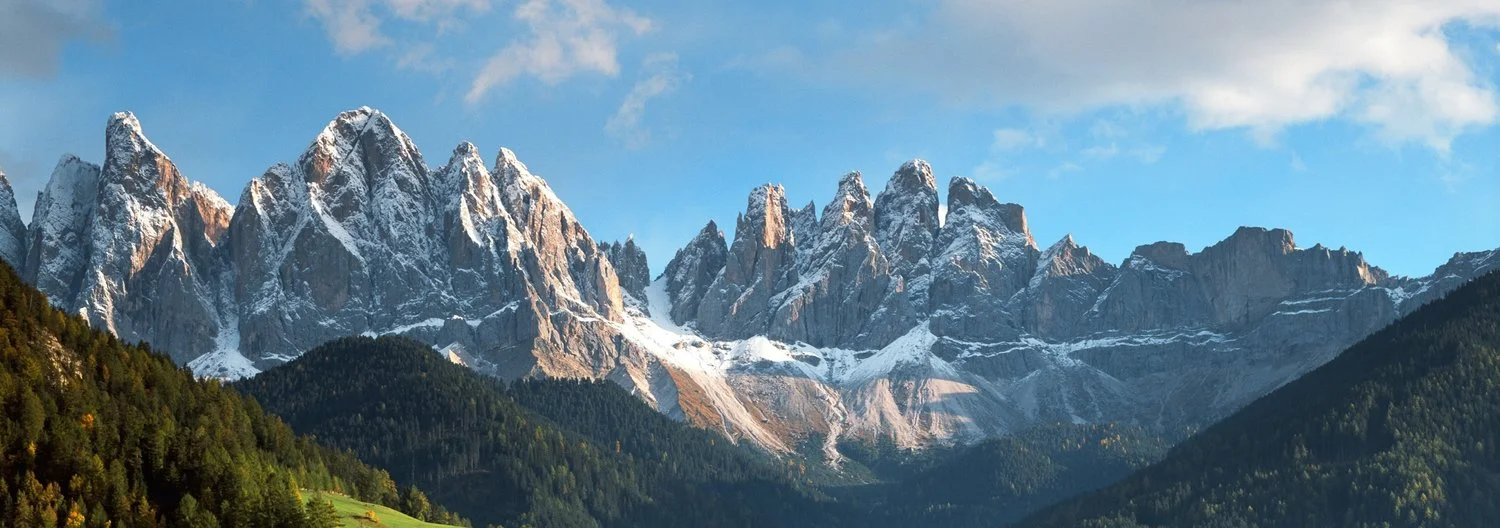My Big Fat Italian Boot Fiasco
The Italian Dolomites
Italy is known for fine food, fine cars and fine leather, among other things. And, ironically, the majority of the world’s finest mountaineering footwear comes from the boot-shaped country.
Just guessing, but this may stem from the combination of three elements found in Italy: A) close proximity to the Alps, Apennines and Dolomites, B) availability of premium leather and C) a culture that constantly pushes the boundaries on performance and quality.
Big mountains shape everything in their shadow; the valleys and plains below, and the mindsets and pastimes of people within. Northern Italy is no exception. The nation owns lots or real estate in the pages of mountaineering history, including the first ascent of K2, arguably the deadliest peak on the face of the planet. Sergio Martini, Silvio Mondinelli, and Reinhold Messner - the first person to summit the 14 highest peaks on the globe - are household names in mountainous regions of Italy. Messner, who's commonly regarded as the best mountaineer who's ever lived, is as much German/Austrian as he is Italian, but nonetheless, hails from the crag-strewn Italian side of the border.
So, in the early days of mountain exploration, Italians had a will, had a way, and had the high-altitude playground in which to test their mettle, and their leather. After World War II, mountaineering became a rallying point for an impoverished and downtrodden populace; a way to regain their national pride.
The climbing culture flourished, driving the development of mountain gear, and the trend never stopped. Backcountry footwear brands like Lowa, Scarpa, Zamberlan, Kenetrek, Crispi, etc., all wear a little tag that says "Italia.”
Over the years, western, Alaskan and international big game hunters have turned to the mountaineering industry for the best footwear available while chasing trophies in gnarly country. It was a slow transition at first, but today, many of the well-known manufacturers even produce hunting-specific boots, or strip their current models of the bright colors common to mountaineering clothing in favor of earth tones.
But as with all specialized equipment, items that excel in certain areas lack in others. It’s the great trade off, and it's as big a factor in boots as it is in rifles, though maybe less evident to the inexperienced boot shopper. And that experience, my friends, comes at a cost.
Here begins my personal, painful, expensive boot-buying saga I often refer to as My Big Fat Italian Boot Fiasco.
The first thing to know is that mountain boots are expensive, difficult to fit properly, and often hard to break in. So why would a serious hunter entertain the thought of spending twice (or three times) as much on a pair of mountaineering boots as they would on a pair of camouflage Rockies?
If you've ever tried packing 120 pounds down a 3-mile shale slide, you know. If you've ever lived in a pair of wet boots for two weeks, ever needed crampons to hunt, ever side-hilled a 45% grade or covered 100 miles in a week, you know. Performance and durability. That's why.
Shale shreds leather and canvas. Weight crushes cheap soles. Side-hills roll ankles without proper support. Miles and wet feet are a one-way ticket to blister hell. Wear cheap boots on an extended mountain hunt and you'll get a swift education.
I've owned a variety of good boots, like the old-school Danner loggers, or Lowa Uplanders, my whole life, but my first real "mountain boot” was a second-hand (actually third, I think) pair of Zamberlan Pamirs.
The Pamir is a super-technical, mid-height boot with a carbon fiber shank that provides zero - and I mean precisely ZERO - flex from the back of the calf to the front of the toe. The foot is unable to bend at all, as these boots were designed strictly for technical crampon use. That's some serious ankle support… Way, way too much ankle support. It is not a hunting boot, and neither are a handful of other high altitude climbing boots that are sometimes sold as "hunting boots." Be aware of this.
The Pamirs are one of several technical mountaineering boot models that are marketed to hunters, but may leave the buyer feeling slighted. Unless every waking moment of the hunt is spent in crampons, this boot is far too rigid.
So I set the Pamirs aside for use only on Mt. Washington, Baker and Rainer, and kept looking for a hunting boot that could take me sheep, mountain goat and elk hunting. If you're in the West, save yourself a lot of time and effort and visit a store that carries three or more brands. Here on the East Coast, we're not exactly blessed with a plethora of mountaineering retailers, so you could do what I did next.
Narrow your search to three or four boots that you think match the description you want. Ship all the boots to your house, and try them all on side by side. If fitted properly, they should be a little snug, since any leather boot will stretch slightly.
Put on thick hunting socks and feel for real pressure points - especially on the toes and back of the heel. These can quickly become blisters. Make sure there's ample arch support. Lace them tight and be sure there's almost no heel lift when you walk. Keep in mind that most of these boots will have a far more rigid sole than what you're accustomed to. You'll learn to love this, and most of the soles do soften a little after a bunch of miles.
If the arch support is all that's lacking, you can get custom insoles with higher arches. Expect these boots to weigh a little more than your average hunting boot. Full grain leather, robust hardware and a beefy rubber rand are to blame, but these are the same elements that'll keep them from flaking apart 40 miles into your next adventure. Bear in mind, too, that this type of boot has a break-in period of 30 to 100 miles, so they'll ultimately form to the shape of your foot and fit even better. Suffice it to say, don't hunt with new boots. Break them in slowly first.
So, after a pair of Scarpa Wrangells, Lowa Tibets, and Zamberlan Outfitter 980s showed up at my door, I put them through their paces, quite literally, from my office to the front door two dozen times each, and up and down the stairs. Right away, the Tibets felt cheap and had way too much room in the toe box. The Wrangells were too stiff - almost like the Pamirs, and the Outfitters were too big in general, but felt good. So I shipped all three back, and ordered the Outfitters in a half size smaller.
(L-R) Scarpa Wrangells, Zamberlan Outfitters, Lowa Tibets
I'll pause here to mention that you shouldn't be shocked if you need half, or even a full size smaller than usual when fitting mountain boots. The European conversion to American sizes is a bit whacky, and mountain boots need to fit pretty tight anyway.
The smaller Outfitters arrived a week later, and felt OK. Being as how I'd now purchased 5 pairs of boots, I figured that maybe "OK" was as good as a pair of mountain boots was ever going to feel, and decided to keep them. To find out if OK was good enough, I went to Colorado and climbed two mountains with the new Outfitters. Halfway up the first one, my feet were bleeding. The boots had gnawed holes in the back of my heels. What was a slight discomfort at home became a real show stopper up on the mountain.
Don't look down! Rather, look closely at my heels. 14,000 feet is a bad place to get blisters. The Zamberlan Outfitters felt OK at home, until I put some miles on them.
The painful result of wearing the wrong boots.
After I got home from Colorado, I was a bit put off by the whole mountain boot thing. I kind of forgot about it for a while, procrastinating. I went to a friend’s house to help him get ready to pour concrete for a new garage. After telling him my boot troubles, he insisted I wear his Kenetrek Mountain Extremes. Conveniently, he and I both wear a 10.5. He'd just gotten them and only had about 10 miles on them. Not even broken in yet.
You know how every once in a while you find something that's just perfect? Well that's how I felt - and still feel - about the Kenetreks. So I took his the day before leaving for Alaska in August, and shipped him a new pair from EuroOptic in exchange. So far, I've lived in them for three weeks in Alaska and two weeks in Montana. They're perfectly broken in, and have about 100 to 150 miles on them.
I’ve never been happier about a pair of boots. I haven’t had a single blister or hot spot. The ankle support is perfect and so is the sole stiffness. The rubber rand keeps the leather uppers well protected, and they’re a bit lighter than you'd expect by looking at them. From spending a lot of time on scree slopes, I've found that the leather Kenetrek uses is really difficult to scratch. Also, compared to the Outfitters, the rubber used on the Kenetrek sole is far more resistant to abrasion. It seems to be a harder compound.
Kenetrek's "K-Lug" sole seems to last much longer than the soles on comparable mountain boots.
I know a number of guys that spend 300 or more days a year in a pair of boots. Often, their biggest complaint is that they wear the soles slick before the boots fall apart, especially with the Zamberlan Outfitters. I’ve suggested that they try the Kenetreks because I think they’ll last longer. And on that note, the guys I know who are already wearing Kenetreks say they won’t buy anything else.
Casey Johnson, a hunting guide in Alaska and Wyoming, won't wear anything but Kenetreks. Most often he wears a pair of insulated Mountain Extreme.
It turned out that I got the opportunity to put the Kenetrek Mountain Extreme in a head to head durability shootout with the Lowa Tibets after all, while filming this Dall Sheep hunt. Cody (the hunter) wore the Tibets. His boots dried more slowly than mine, and his rand started peeling off while mine held fast. That said, he was relatively comfortable in them, and has grown to like them, and they seem to be holding up just fine.
I'm extremely fortunate that I tried the Kenetreks when I did. I can't say for sure what the outcome in Alaska would’ve been if I'd have taken the Outfitters, but it wouldn't have been pretty.
Good boots stay comfortable wet or dry. Here's my damp foot next to a wolf print.
All that said, just because a boot works for me doesn't mean it's guaranteed to work for you. It's all about foot shape; length, width, height, arch and size of your heel. Kenetrek makes a rugged, light, comfortable boot, and you owe it to yourself to try them out, whether or not you end up buying them.
Start your boot search early - months in advance. Try a few different brands, lean toward a size smaller than what you'd generally buy, and don't settle for a boot that just feels OK. And when you find “The One”, take care of them. Good boots are an investment. We cover boot care in this article.
Give us a follow on Instagram (@TransientOutdoorsman) and Twitter (@TransientOutdrs) We’re on Facebook and YouTube, too!
Chilling in the Brooks Range.
Zero Your Turrets – T.O.
# # #













